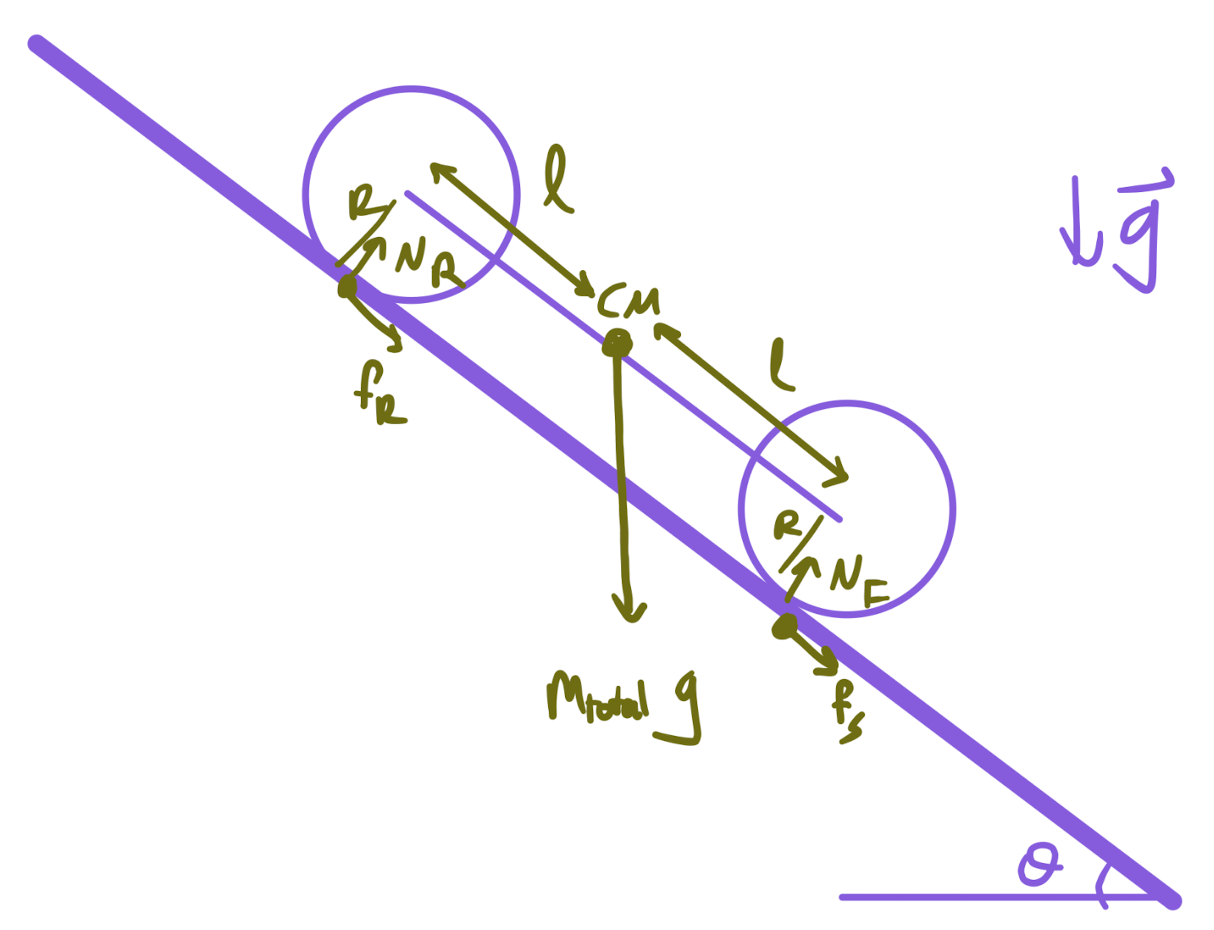Our professor has solved a problem in class regarding normal forces on a wheel moving without slipping with acceleration (assume the wheel is put on a ramp with gravity acting on it). Afterwards, we added another wheel connected to the first one by their axes. Analyzing the net torque on this 2 wheel 1 rod system yields different normal forces for each wheel, regardless of the mass of the connecting rod (assuming total mass of the system is constant).
This sounds counterintuitive to me since I can't see the difference between this system with an arbitrarily small rod mass, and 2 wheels rolling down separately without a rod between them, since all the rod does (in my opinion) is giving us the constraint that the distance between the centers of the wheels stay constant, a constraint already satisfied in the 2 separate wheels case naturally, assuming same initial speeds.
The calculation we did to find normal forces is as follows:
$\tau_{CM}=N_Fl-N_Rl+f_RR+f_FR=0$
$f_R+f_F+m_{total}g\sin(\theta)=m_{total}a$
$N_F+N_R=m_{total}g\cos(\theta)$
From these equations we calculate different $N_F$ and $N_R$, something I'm having trouble understanding.
Furthermore, after analyzing the forces on the wheels individually, I find that there should be a net torque on the rod, which doesn't make sense given the system's movement. This is, however, a different question from what I'm asking for here.
How do I make sense of this result, or is there something else missing?


